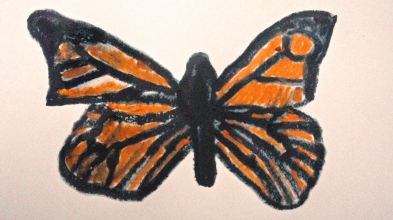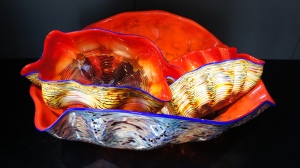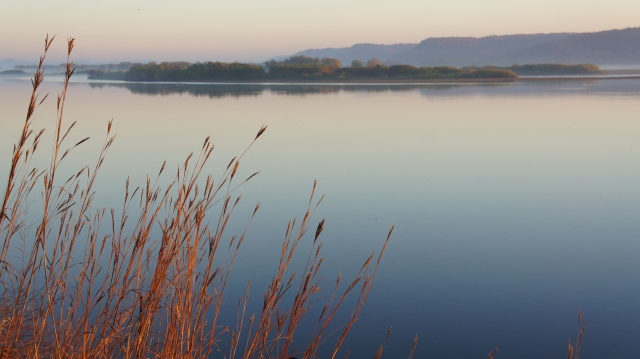Midweek Devotion #12
September 23, 2015
My mind is not at peace. Please, set it at peace, master.
Bodhidharma replied, Bring me your mind and I’ll set it at peace.
After sitting exhaustively, Huike returned and said to the master, I’ve searched and searched, but I cannot find the mind.
There, said Bodhidharma, I’ve set it at peace for you. —Zen Koan
How do we find peace? the moment we seem to know, it seems to slip our grasp again.
For me, when things pile up, when there are fifty different priorities to pay attention to, when relationships and kids and work and financial problems are all aligning in a perfect storm, I lose peace. At times in my life, anger has welled up so strongly that no peace ever seemed possible. At other times depression has taken hold.
It is easy to believe that peace is attainable by meditating, by doing yoga, by “sitting exhaustively” and somehow losing the self. If we “lose our mind” we can finally attain the peace we seek. While there is some truth to letting go and empty the mind completely, this way of approaching life does have its downsides.
Here is a possible solution. What the Koan refers to as “mind” is actually the left hemisphere of the brain. When we quiet that side of the mind, we can find peace.
The Left Brain (LB) is the side that is constantly chattering, criticizing, critiquing, analyzing, second-guessing, time-keeping, labeling, “tweeting,” fretting, strategizing, systematizing, categorizing, utilizing, optimizing. For the LB every person, place or thing in life is a tool to use for one’s own power, protection, and advancement. Many of the information processing skills of the LB are needed for executing tasks and being efficient, for ordering the chaos of life into something we can make sense of. The left brain is perfect for that. But left to run amok, it will destroy your peace of mind.
The Right Brain (RB) is opposite of all the above LB descriptors. The RB is non-linear, non-time-oriented, altruistic, creative, cooperative, empathetic, communitarian, connective, observant. It is willing to live without labels, categories, and systems. It looks at the self as an organic part of nature, rather than as a detached controller of the world. It is also the side of the brain that connects to sadness and emotions (which the LB tries to suppress).
For more on the LB/RB differences and how those apply to life, there are a few resources I would recommend. I plan to review them in future posts, but here are the ones that have had the most impact on me:
- A Whole New Mind by Daniel Pink. How those who can access the right brain will ascend in the workplace as more and more left brained activities become automated.
- The Master and His Emissary by Iain McGilchrist. This is the most comprehensive work I’ve come across yet on what science knows about the functioning of the hemispheres of the brain. Well worth the time to study and absorb, especially since it bridges the scientific material to philosophy and culture, the history of the West, music, art, and religion.
- The Artists’ Way by Julia Cameron. A transformative program of self-exploration and recovery using a gentle process of journaling and “artist dates” to open the mind and form new paths.
- The Van Gogh Blues by Eric Maisel. How creative people are susceptible to a unique form of depression that cannot be treated with pharmaceuticals. We enter a meaning crisis when we do not create.
I know from playing violin and painting, that the mind—that is, the LB—must quiet down in order to do these activities, and that I feel a wonderful sense of peace after attaining the quiet mental awareness required. When I teach drawing, I teach people to feel the shift between the left and right hemispheres of the brain. It is like a muscle, that most people have forgotten how to use. It takes some work to train the muscle again.
You probably use the RB more than you are aware. The Right Hemisphere is the part of the brain that we access to go into the body. So anytime you are doing a bodily activity, whether a sport, or yoga, hiking in nature, or playing a musical instrument, you are accessing the right brain. Your RB is there whenever you are adapting to someone else’s point of view, really entering someone else’s emotional frame, or intuitively making a decision based on a big-picture understanding. If you have ever been in the shower and had an “aha” moment, that was your RB coming to the fore.
We do not and cannot ever really leave the mind behind. But when we allow our right brain more prominence, it actively quiets the chattering left brain. A side effect is peace of mind, guaranteed.
Take a GoodMInute
What can you do today that will help you access your Right Brain and quiet the Left Brain?
Why is it so hard for us, in our culture, to release the control, protection, and power that the Left Brain focuses on?
When have you felt deeply at peace? Can you identify the aspects of the situation that were quieting your Left Brain, such as being away from the constant stream of sound-byte media, from constantly being aware of the time, or being involved in a physical activity that absorbed your whole attention?








